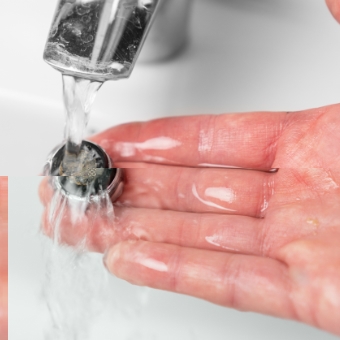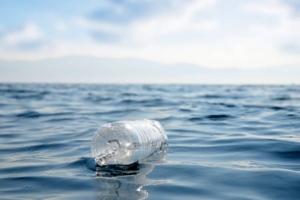What is Lead?
Lead is a natural chemical element found on the periodic table. It is a silvery-white or grey metal that occurs naturally in small amounts of the earth’s crust. It is believed to be one of the oldest known metals, and its use is described often in biblical accounts. The Babylonians used lead to record inscriptions and Romans for coins, tablets, cooking utensils, and water pipes. However, today, lead is found throughout the environment (soil, air, food, consumer products, and water), and although lead has beneficial uses, it is highly toxic to animals and humans.

The use of lead in consumer products has lessened since the 1980s, causing a significant decrease in public lead exposure. Still, lead is used in various products such as solder for cans, gasoline, paint, some glazes for china pottery, dinnerware, and leaded crystal glassware. Industries such as petroleum, printing, cutlery, and glass expose workers to lead dust, fumes, and solids. Lead is also used to make storage batteries, pewter, and ammunition. Over time one essential industry has used lead extensively: the plumbing industry. It is easy to see how poisonous lead is found throughout the environment with the many industries that still use or produce lead by-products.
Exposure to lead
Exposure to lead can come from several sources. Industrial emissions, smelters, and refineries release lead into the air. Lead is found in dust generated in homes by lead-based paints and lead solder. Over time, lead used in paint, pesticides, and gasoline can be found in soil, especially in older urban neighborhoods. Lead in soil and dust can cling to shoes, clothing, hair and skin, and even on pets.
Today, there are many products in which lead is detected, such as lead shots, shells, fishing weights, lead-acid batteries, and lead-painted wood. Some pieces of pewter, glassware, china, and stemware contain lead. Unfortunately, some children’s toys and costume jewelry are also painted with or include lead.
Today traces of lead are found in many foods; with the use of any lead-glazed pottery or dishware, lead can enter the food or through lead dust in the air or soil. Another well-observed source of lead is found in agriculture using certain insecticides sprayed on fruit and vegetables. The workers spraying the insecticide will encounter the lead and expose the consumers.
Lead found in tap water or well water is a vital concern as many cities with older neighborhoods still house lead water lines, or newer pipes joined with lead solder. Any tap water containing lead used for drinking, cooking, or cleaning causes harmful lead exposure.
Before the mid-1980s, lead was commonly used in drinking water plumbing, including brass, copper, bronze piping, fixtures, solder (joins the metal pipes), and taps. New regulations were put in place to restrict the use of lead in plumbing, but many established cities and towns still have water lines, pipes, and plumbing that contain lead. The amount of lead released into the water depends on the corrosiveness of the water, the length of time the water sits in the pipes, and the type of plumbing materials used.
Generally, your municipal water supplier is responsible for the service line up to your property’s water valve or meter. Your water supplier has current lead levels and contaminants listed in a yearly public municipal water quality report. Still, it is best to have your water professionally tested at a certified laboratory to check the water quality from your tap. Early morning samples when the water has been stagnant will usually be higher than those taken later in the day. A professional plumber can help identify if you have leaded plumbing parts or a service line containing lead on your property.
The Harmful Health Effects of Lead
Lead is a dangerous and highly toxic substance that produces many adverse health effects. Both adults and children are affected and can suffer from lead exposure, but childhood lead poisoning is more prevalent and toxic. There is a higher risk of children ingesting lead due to mouthing or chewing objects and frequent hand-to-mouth activities, including paint chips, toys, or furniture. Studies show no safe blood level of lead has been identified in children.

Infants are at high risk of lead poisoning from infant formulas mixed with contaminated tap water, due to the large amount of lead-tainted formula they consume compared to their body weight. Another significant source for infants is breast milk, and pregnant mothers may unknowingly expose the fetus to lead via the placenta. An adult exposed to a small dose of lead may have a small effect, but even a tiny quantity for an infant, child, or fetus can cause significant harm and irreversible damage. For children, even low lead levels are harmful.
Lead poisoning affects the entire body, especially the central and peripheral nervous system, the gastrointestinal system, and the impaired form and function of blood cells. It also impacts the brain and nervous system development, producing slowed growth, blindness, deafness, learning disabilities, seizures, coma, and can be fatal in severe cases. A massive exposure in adults and children can cause a permanent brain injury.
It has been observed that increased blood lead levels in young children produce reductions in their Intelligence Quotient (IQ) scores. The most serious concern is for children ages six years and under because their brains and nervous system are still developing. For these children, it only takes a small amount of lead to cause a loss of function in the affected part of the brain and permanent damage. Children experience behavioral issues, hyperactivity, learning disabilities, and anemia with low blood lead levels.
For pregnant women, once exposed, lead is persistent and accumulates over time. Lead may cause slowed fetal growth and premature birth. It is stored in the bones and with calcium, but calcium and toxic lead are released to help form the baby’s bones. Lead can also cross through the placenta to the fetus causing severe issues for both mother and baby.
Adults are also at risk of the harmful effects of lead poisoning. At first, there may be no noticeable symptoms, or depending on the exposure, symptoms may develop suddenly. The accumulation of lead over time may produce cardiovascular symptoms such as increased blood pressure and the development of hypertension. Lead may also cause reproductive issues for both men and women and decrease kidney function.
Lead Poisoning In Pets
Animals can be poisoned by lead. Lead accumulates first in soft tissue and then in bone, causing damage to multiple organs, including the kidneys, gastrointestinal and nervous systems. The most common household pets affected are dogs, cats, birds, and farm animals such as cattle, sheep, horses, and poultry.
Lead in Drinking Water: Is There an Acceptable Amount?
If there is any concern about lead exposure, taking a lead blood test is the best way to tell if you have been exposed. Lead poisoning affects the entire body, and there is no safe level in children’s or infants’ blood. The EPA (Environmental Protection Agency) has set a non-enforceable maximum containment level goal (MCLG) at zero. Current scientific research shows no safe amount of lead in drinking water.
The EPA has developed a lead treatment technique called the Lead and Copper Rule; it is an enforceable procedure that must be used to control the contaminant in the water system. For lead, the corrosivity of the water must be controlled, and tap water samples must be taken from suspected plumbing containing lead. Further steps must be taken if more than 10% of tap water samples exceed over 15 parts per billion lead levels.
Three main actions include: optimizing corrosion, educating the public on reducing lead in their drinking water, and replacing service lines. The EPA requires the public to be alerted if there is any problem with their drinking water; it is the Public Notification Rule.
Ways to Reduce Lead in your Drinking Water
Homes and buildings built before 1986 are at higher risk of having pipes, water lines, or plumbing containing lead. If the lead has been detected in your home, there are some actions you can take to minimize your risk of exposure. First, flush the cold water tap for one to five minutes until the water runs cold in the morning or when plumbing has not been used for hours. Use cold tap water for drinking and cooking since hot water will cause further leaching of the lead. Also, clean the aerator (screen) on your faucet regularly. It is imperative to note that boiling tap water will not remove lead and can cause an increase in lead.

Using the hot water tap is more corrosive to lead than cold so it is best not to use the hot tap water to make hot drinks, infant formulas, hot cereals, or for cooking. One way to flush your water line and not waste that water is to take a shower. Lead does not absorb into the skin in water, so showering or cleaning can help flush the pipes.
The above are temporary or more short-term solutions, but the lead water lines or plumbing should be removed and replaced to fix the problem permanently. It can be a long and challenging process and not to mention a considerable expense. Unfortunately, even with new homes, lead exposure is possible because many major cities still have 100% lead piping connecting municipal water treatment plants to homes, schools, and businesses. This is where investing in a water treatment system will provide your family peace of mind and your household with continuous pure, safe, clean drinking water and alleviate the worry of lead.
Lead Removal Water Systems
The CDC suggests that water treatment methods of carbon filters, distillation, and reverse osmosis are systems designed to remove lead and other contaminants. Distillation is not an optimal option since it requires a significant amount of energy from a heat source and is an extremely slow process.
Activated carbon filters capture chemicals and contaminants such as lead through a series of pores while the pure water runs clear through the filter. There are activated carbon filters designed specifically for lead removal, so look for filters certified by the National Sanitation Foundation (NSF) and the Water Quality Association. The NSF 53 rating certifies the filters and their ability to remove or reduce lead and other known contaminants that produce adverse health effects.

A reverse osmosis water treatment system is a simple yet efficient and economical method to filter and protect your household drinking water. It does not require the use of any chemicals and provides highly effective purification, flushing away impurities such as lead, leaving pure, clean drinking and household water. During the process, household water pushes through a series of filters that remove contaminants. A reverse osmosis system can remove up to 99% of lead and other pollutants. Read more about reverse osmosis systems here.
Activated carbon block filters and reverse osmosis units are called POU or point-of-use systems. They can be installed on the countertop or under the sink and may have one, two, or three filter housings. They provide filtration if lead is coming from the municipal water supply. Additional filters may be added to remove other contaminants, such as water hardness and iron before the carbon filter.

If testing shows higher levels of lead which can often be found in well water, a Lead Removal Filter System is an outstanding choice. This specific filter system removes up to 99.9% of the lead from household and drinking water. Installation is at the mainline of the house, meaning it is a point-of-entry type system.
Another point-of-entry system that also removes lead is a Whole-House Water Filtration System. These systems are excellent at removing lead and chlorine, VOCs( volatile organic compounds), industrial chemicals, iron, copper, aluminum, plus many other contaminants.
Both the Lead Removal Filter System and the Whole-House Water Filtration System are point-of-entry systems as they treat all water coming into the house and provide effective lead removal for well water and tainted tap water. Each system requires additional filters necessary to remove water hardness, iron, and hydrogen sulfide before the water travels through the lead removal filter.
Remember, no amount of lead in drinking water is safe, especially for children and infants. It is essential to ensure your household and drinking water do not contain poisonous lead. The best way to know for sure is to have your tap or well water professionally tested. If lead is found in your water supply, it is vital to consult with a water treatment professional. They will help you determine the best and safest lead removal system for your family and household.
For more information about Excalibur Lead Removal Filters or Whole-House Water Filtration Systems, please contact us.


